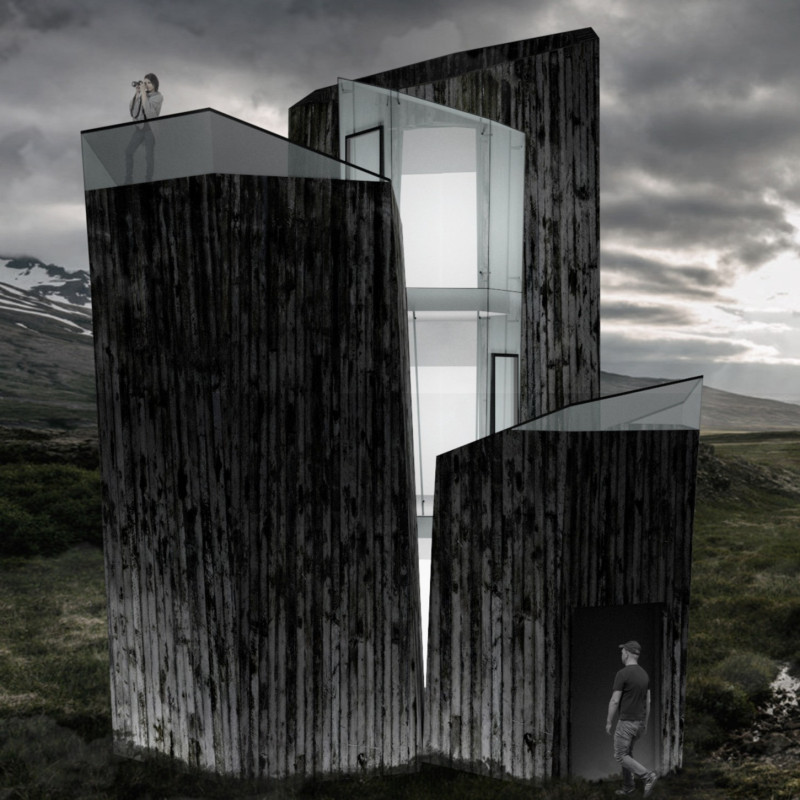5 key facts about this project
The "Silver Lining" observation tower is a three-story structure designed to accommodate both public and private functions. It is set against a backdrop of geological features, providing visitors with a unique perspective of the landscape. The design concept reflects the movement of tectonic plates, an idea that informs both the building's form and its spatial layout.
Conceptual Framework
Inspired by geological forces, the design highlights the dynamic nature of the Earth. The tower's three massing elements separate as they rise, symbolizing the shifting of tectonic plates. This not only creates a visually striking form but also enhances the experience of moving through the structure.
Spatial Organization
The layout of the observation tower supports smooth circulation and guides visitors through essential spaces like the information desk, waiting area, toilets, café, and observation decks on the second and third floors. Each area is thoughtfully arranged to promote interaction and engagement, offering people opportunities to connect with both the building and the surrounding environment.
Materiality and Sustainability
The tower features wood-panel printed exposed concrete, contributing to its architectural identity while being mindful of environmental impact. It is equipped with photovoltaic (PV) panels that generate electricity on site. The roof also collects rainwater, which is filtered and stored for reuse, highlighting a commitment to sustainability and efficient resource management.
Site Integration
Pathways lead from the observation tower to nearby geological features, such as the caves Kvennagja and Karlagja. These routes encourage exploration and help visitors form a connection with the landscape. This thoughtful integration allows the tower to coexist with its environment, offering an engaging experience that emphasizes the relationship between the built and natural worlds.
The observation tower features observation decks that provide sweeping views of the landscape, amplifying the visitor experience while fostering a deeper appreciation for the geological narratives present in the area.






















































